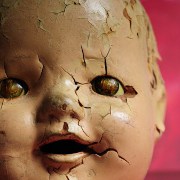 Photo: Getty Images
Photo: Getty Images
According to the Office of Children’s Health Protection, children are more vulnerable to environmental health issues because their little bodies are still growing, and they eat, breathe, and drink more in relation to their body size.
Since they are active and curious, their behavior can mean accidental exposure to dangerous substances.
It is no surprise then that the Environmental Protection Agency (EPA) reports one million children a year are exposed to and poisoned by lead. Since EPA also reminds us that lead poisoning is 100 percent preventable, parents can easily keep their children safe from this environmental hazard.
Exposure to lead can cause brain damage, slowed growth, hyperactivity, hearing problems, and headaches. Early symptoms of exposure include listlessness or hyperactivity, loss of appetite, reduced attention span and constipation.
EPA reports that exposure is difficult to detect since some children show no symptoms at all while others appear to be suffering from the flu.
The year to remember in regards to lead-based house paint is 1978. If you live in a home built before that year, be wary of cracked or peeling paint from porches and fences, window sills, banisters, walls and cupboards, doors, and baseboards.
Since lead dust can get trapped in the ground outside the house, EPA recommends teaching your children to wipe their feet as they come in the door.
If you suspect your home contains lead paint, contact a certified company to test for and remove it. Don’t try to do it yourself.
Prevent lead dust from accumulating in your home by wiping down windowsills after opening and closing windows and mopping floors regularly. Remove any non-glossy window blinds and replace with blinds clearly marked as “lead-free.’’
Of course, clean up paint chips so that children can’t play near or with them. If your home may have lead pipes, have your drinking water tested and use a water filter before drinking or cooking.
EPA also recommends running the water until it is cold, for about 30 seconds, or longer, if heavy water usage has just occurred.
For more information to keep your home and family safe from lead, visit the EPA family publication at: http://www.epa.gov/lead/pubs/chance.pdf
A million new child cases a year is an indication that lead poisoning is not merely a thing of the past. However, informed parents can take simple precautions to fight against lead poisoning and protect their families.
Sources:
Children’s Health Issues. Office of Children’s Health Protection at Environmental Protection Agency. Web. 28, Sept. 2011.
http://yosemite.epa.gov/ochp/ochpweb.nsf/content/homepage.htm
Lead Free Kids. Environmental Protection Agency. Web. 28, Sept. 2011.
http://www.leadfreekids.org/index.php
Reviewed September 29, 2011
by Michele Blacksberg RN
Edited by Jody Smith






Add a CommentComments
There are no comments yet. Be the first one and get the conversation started!